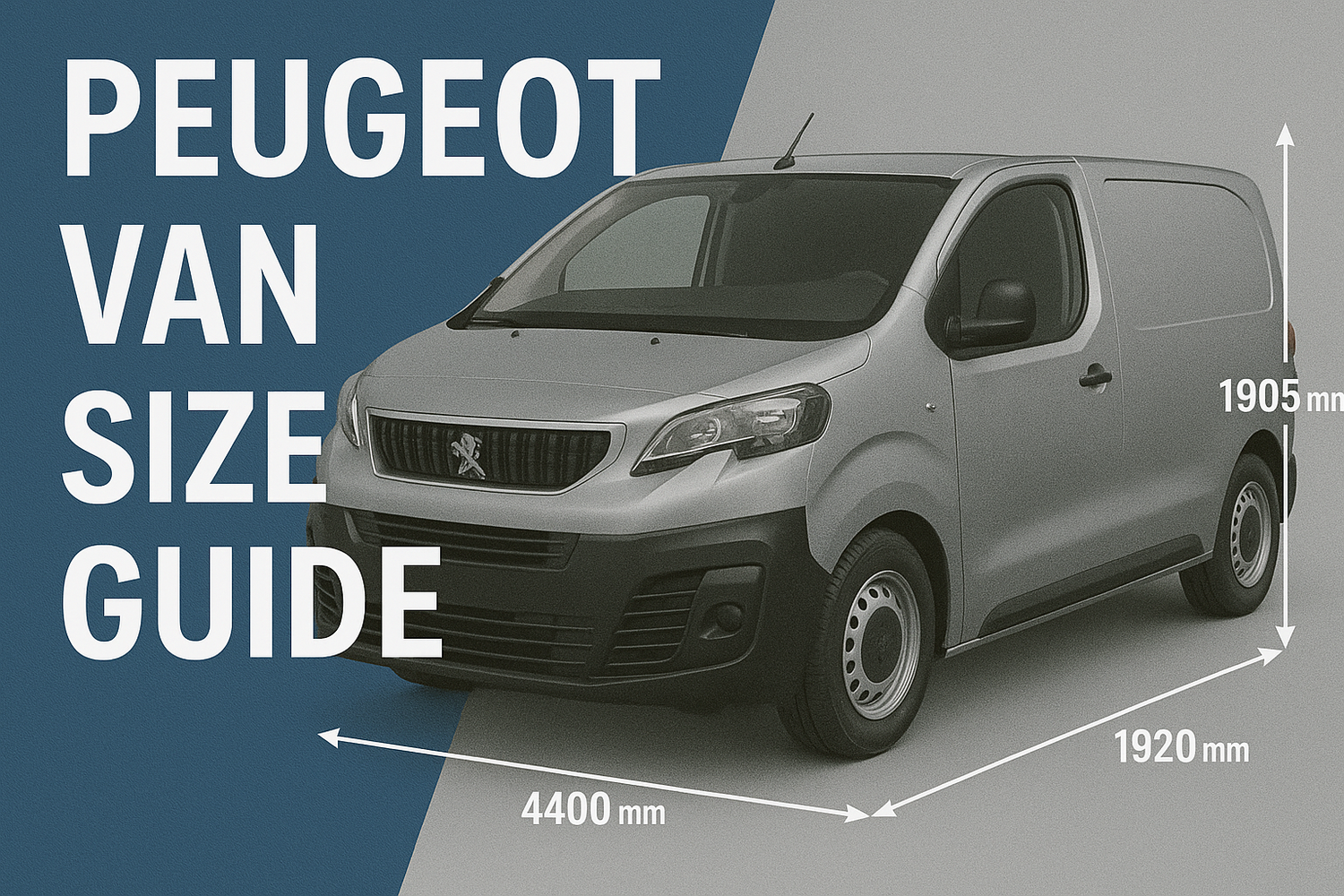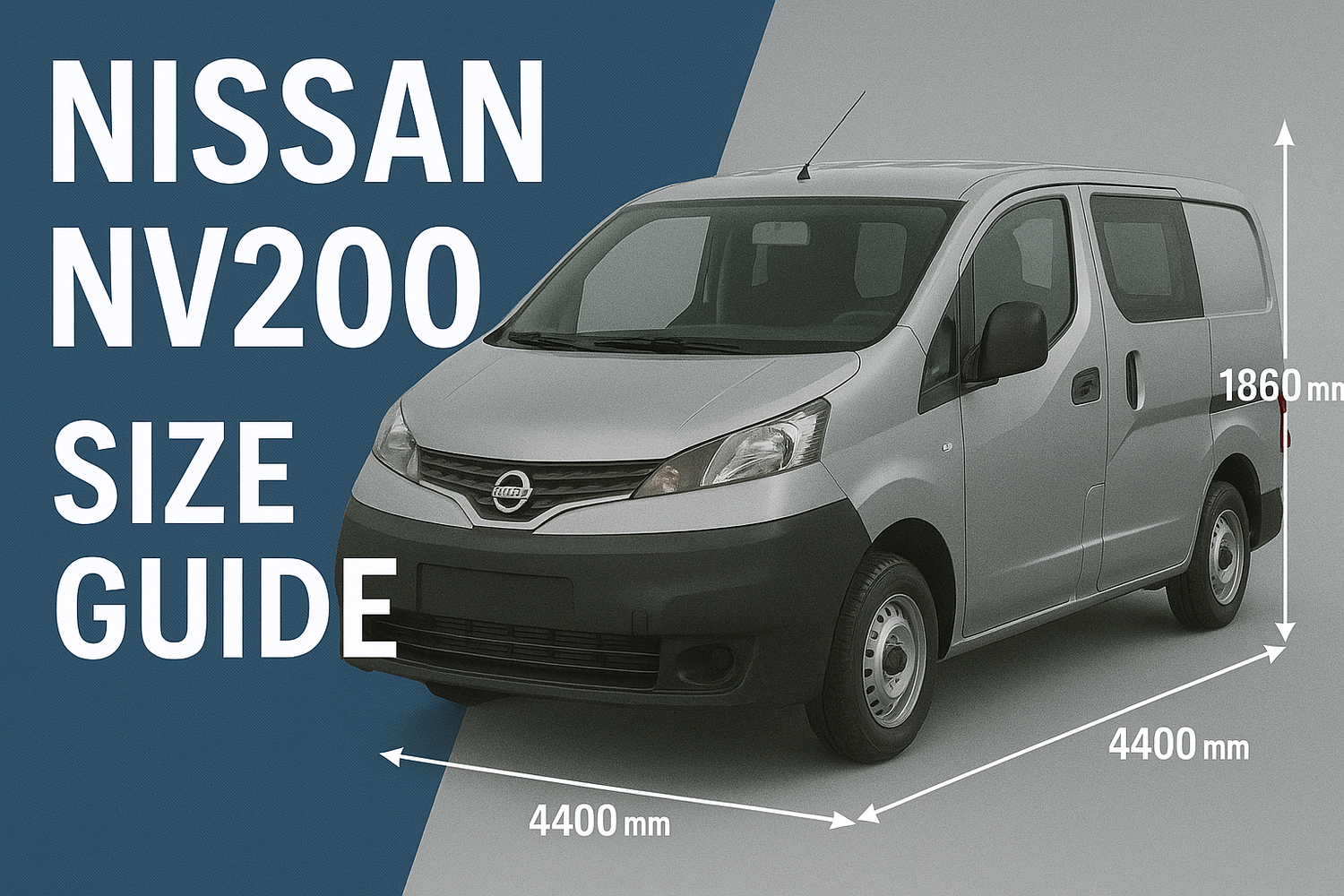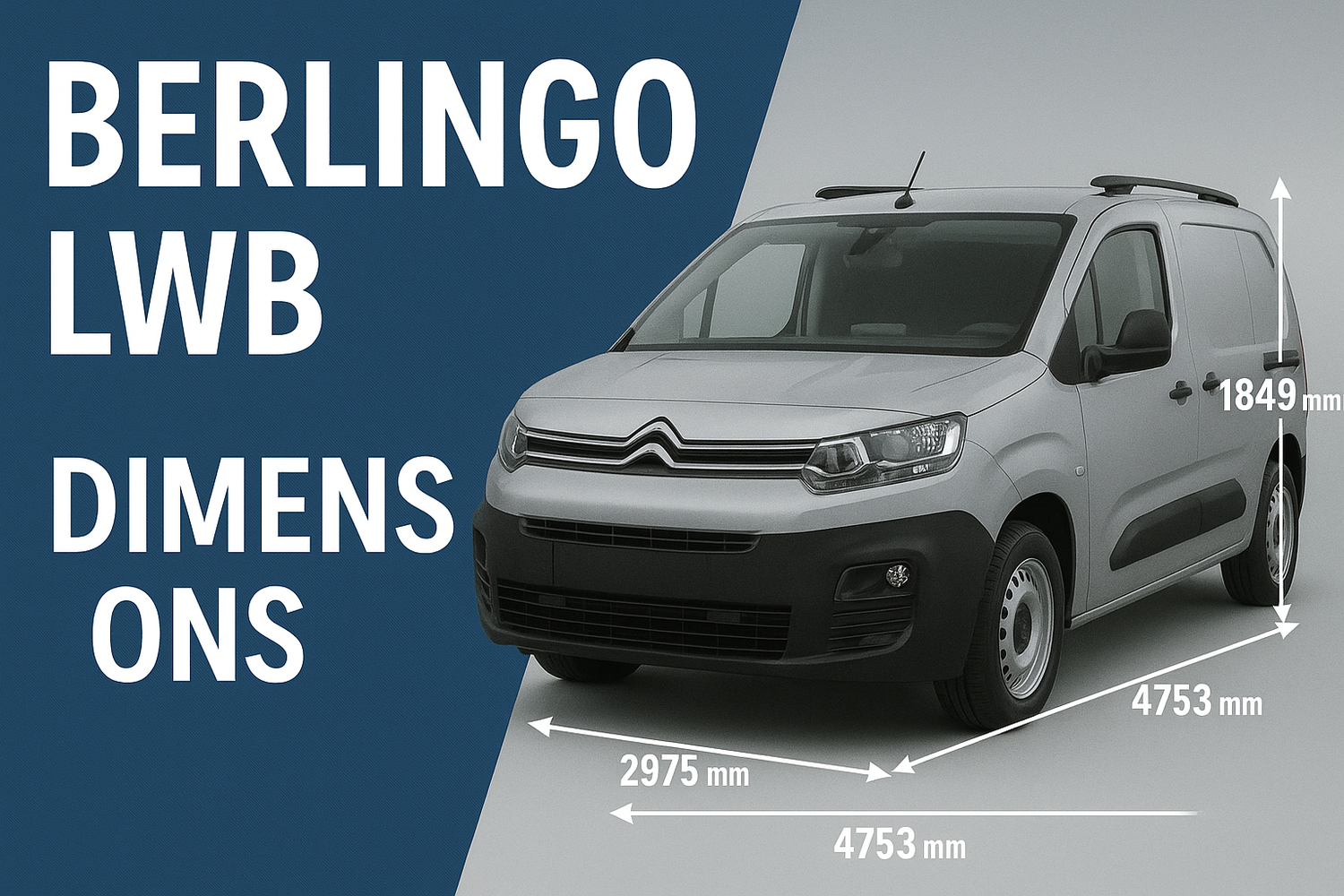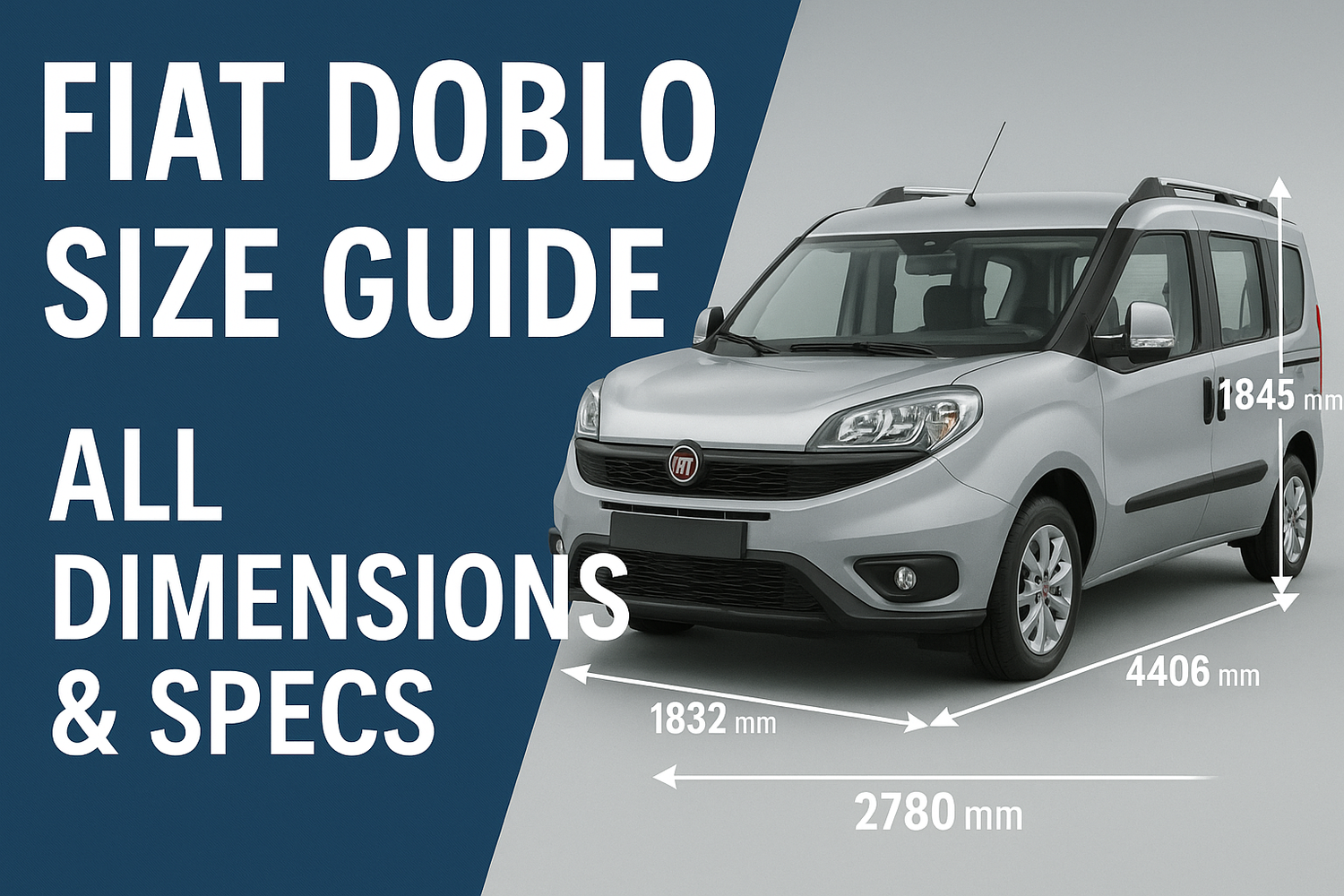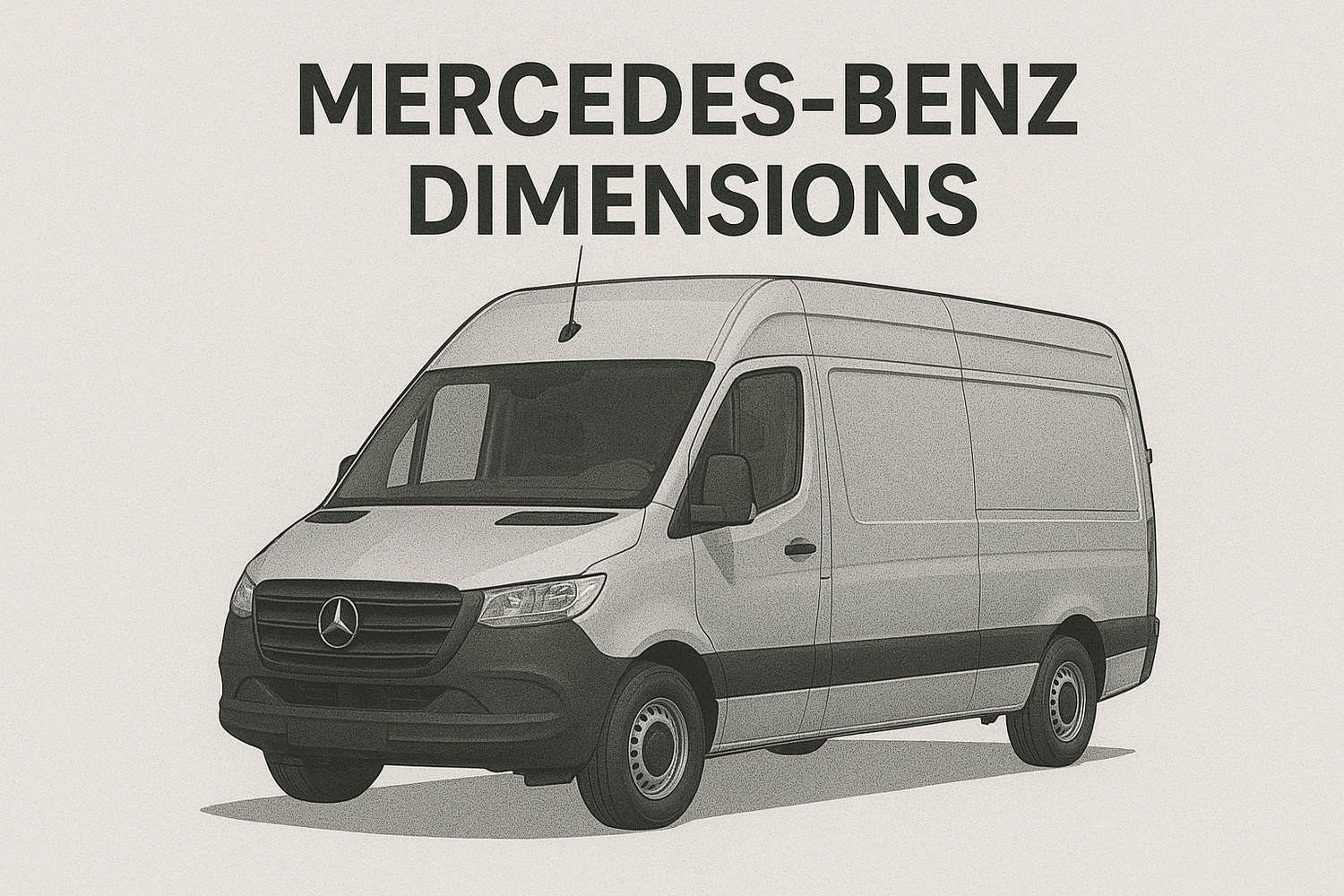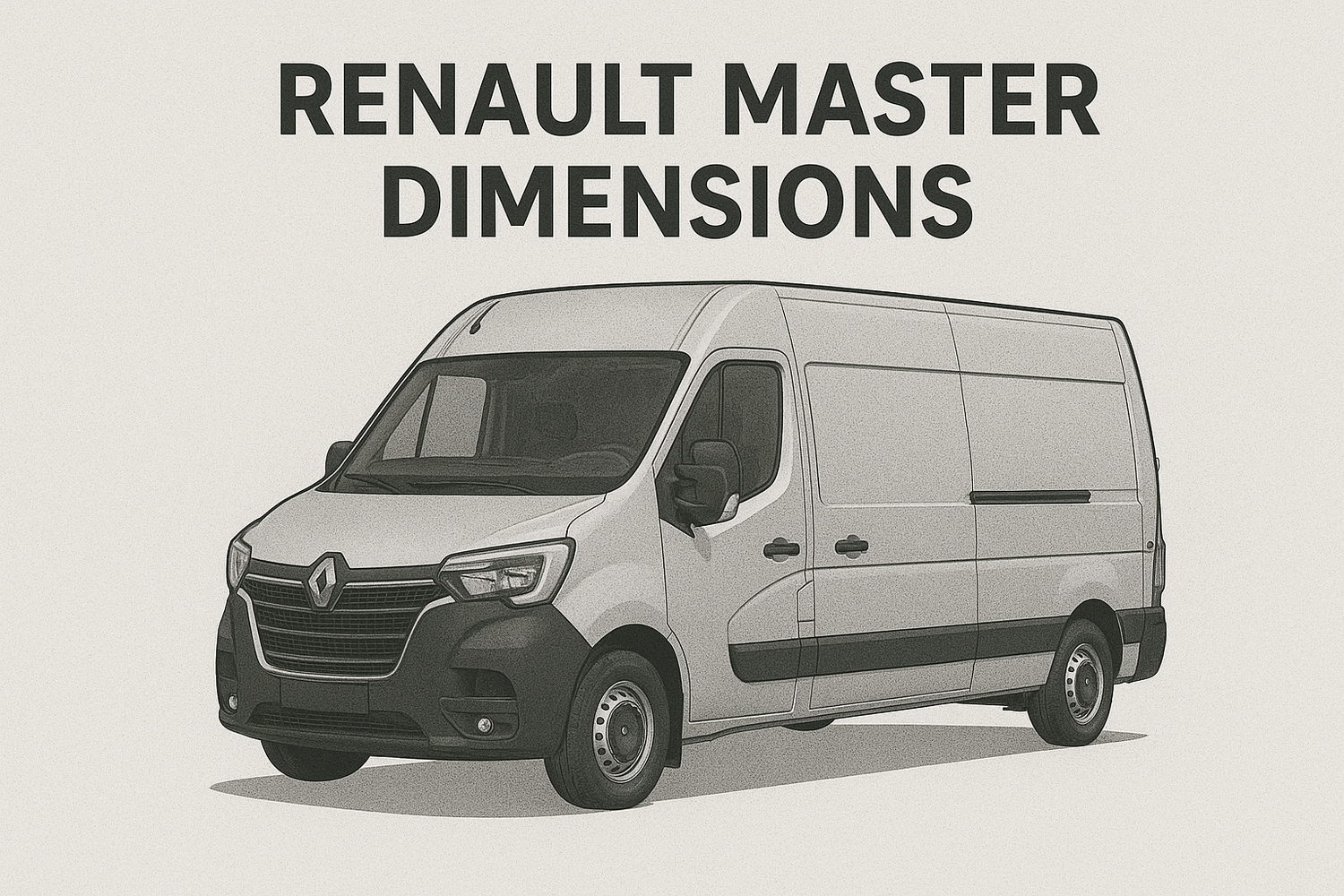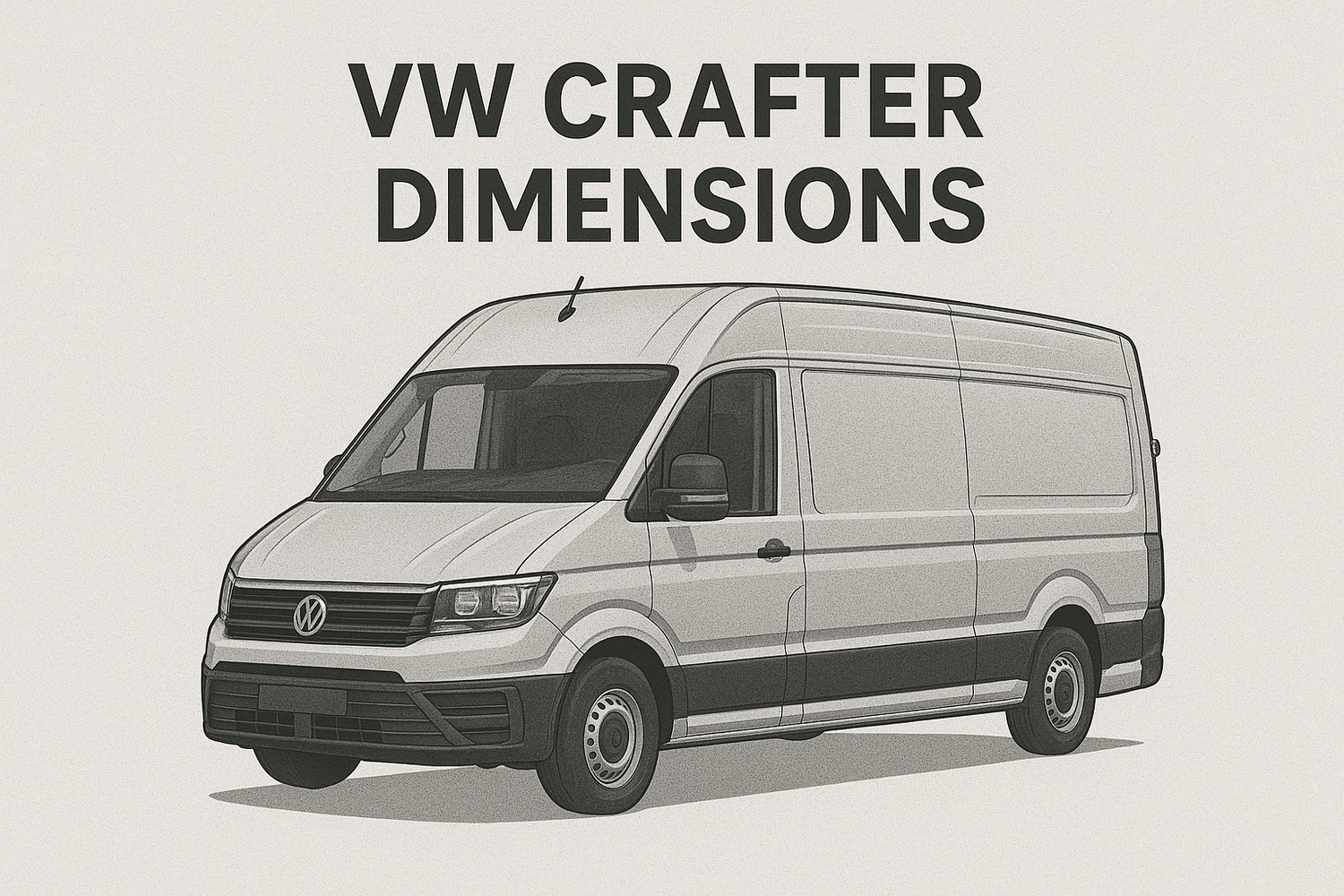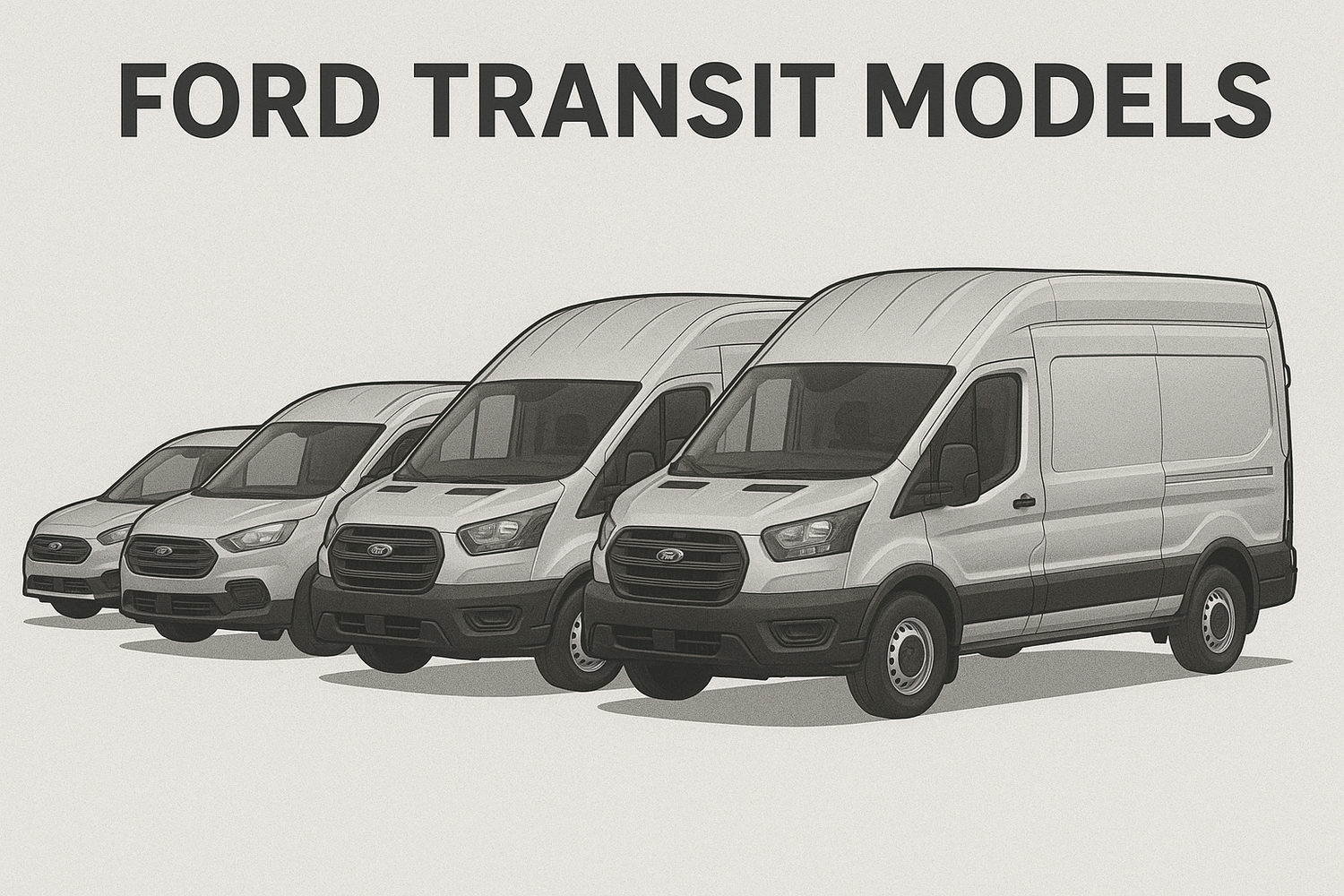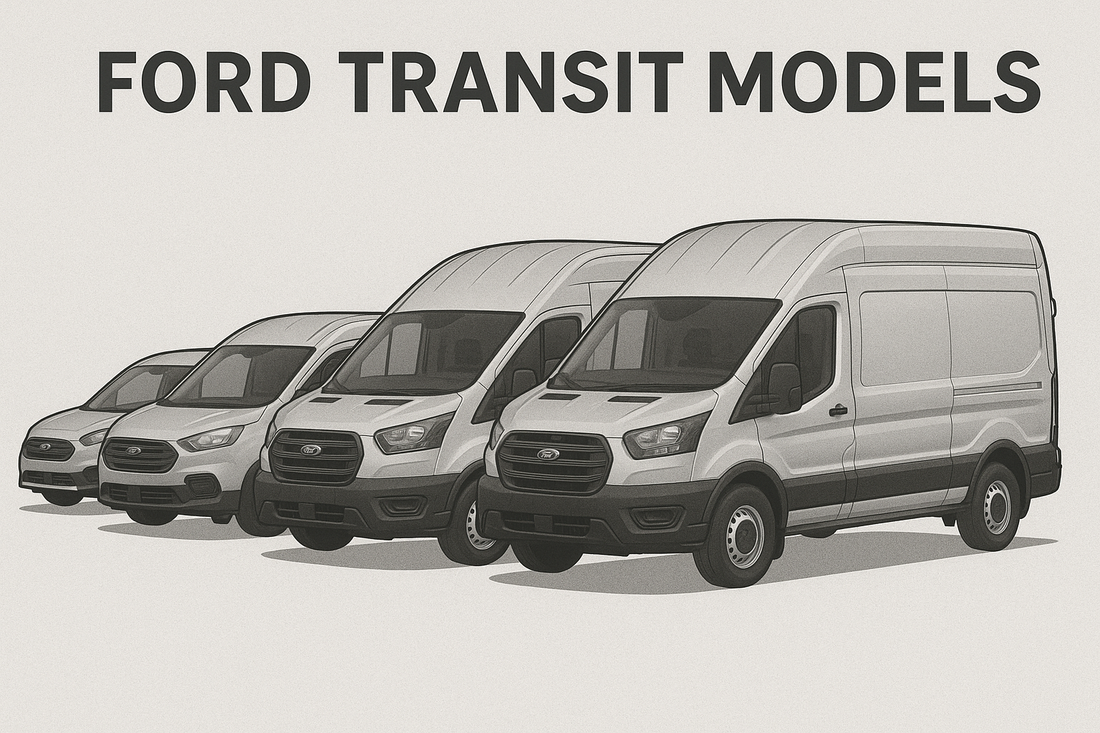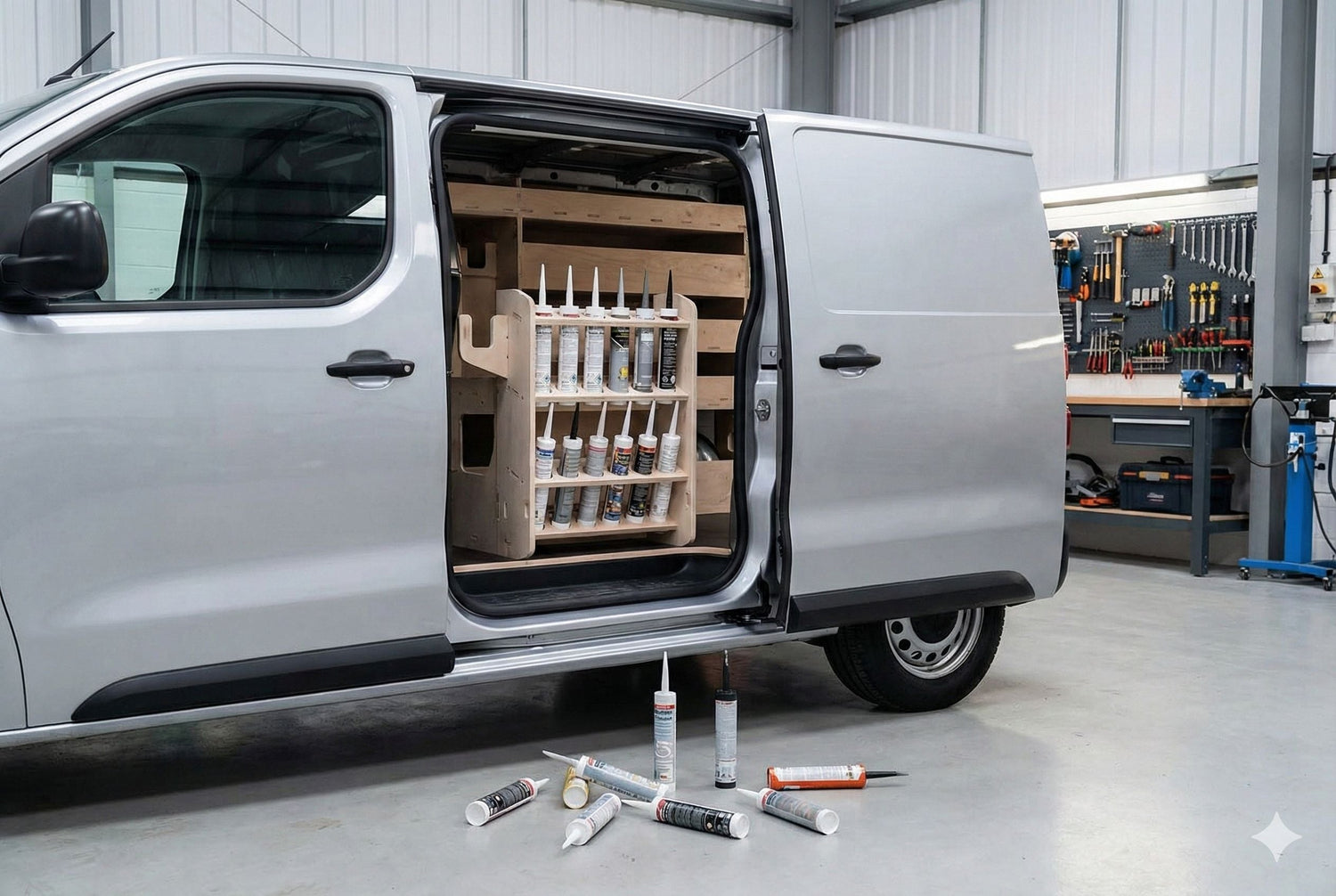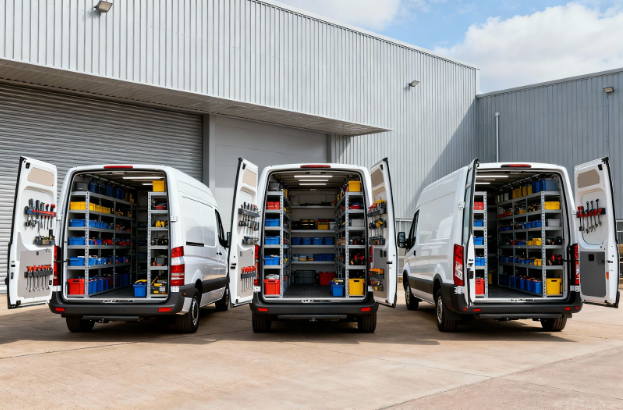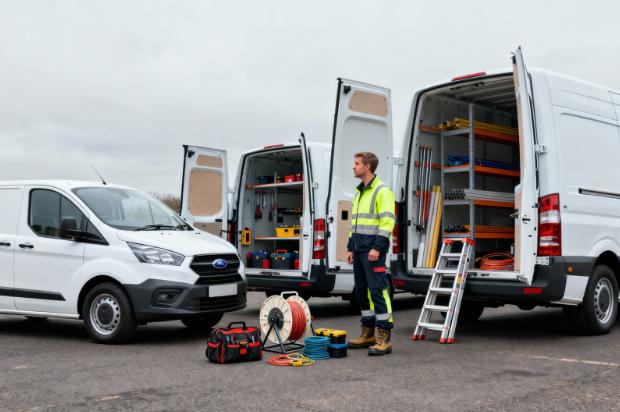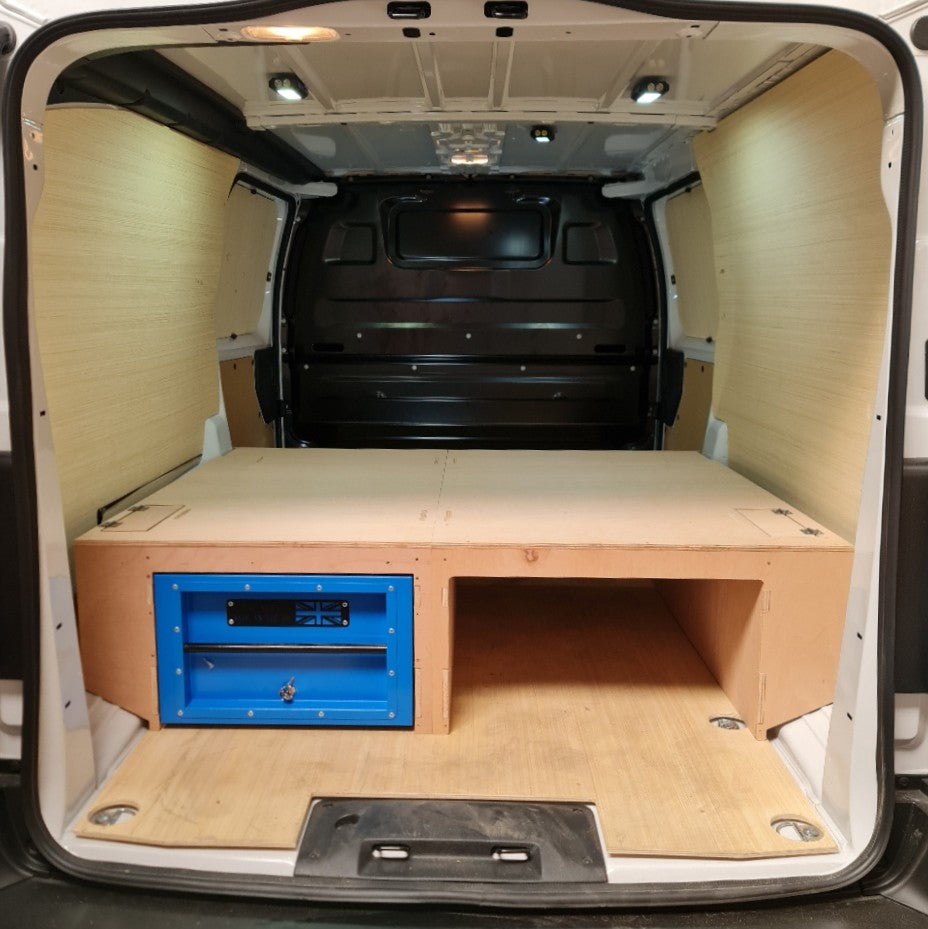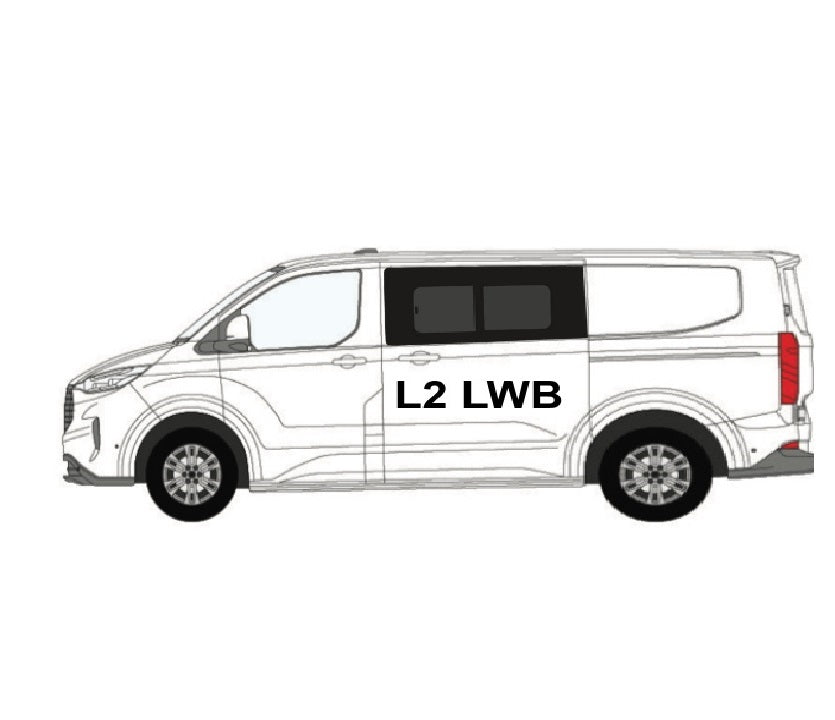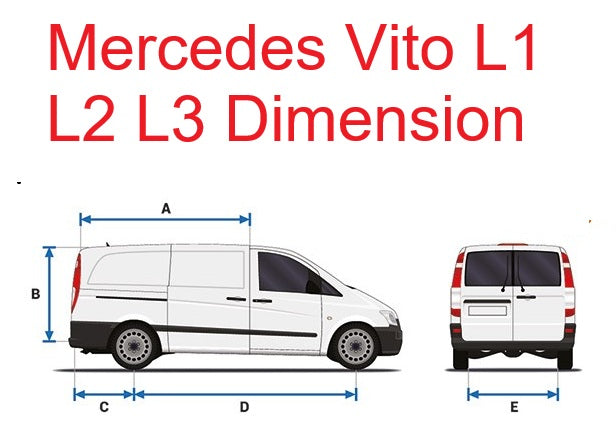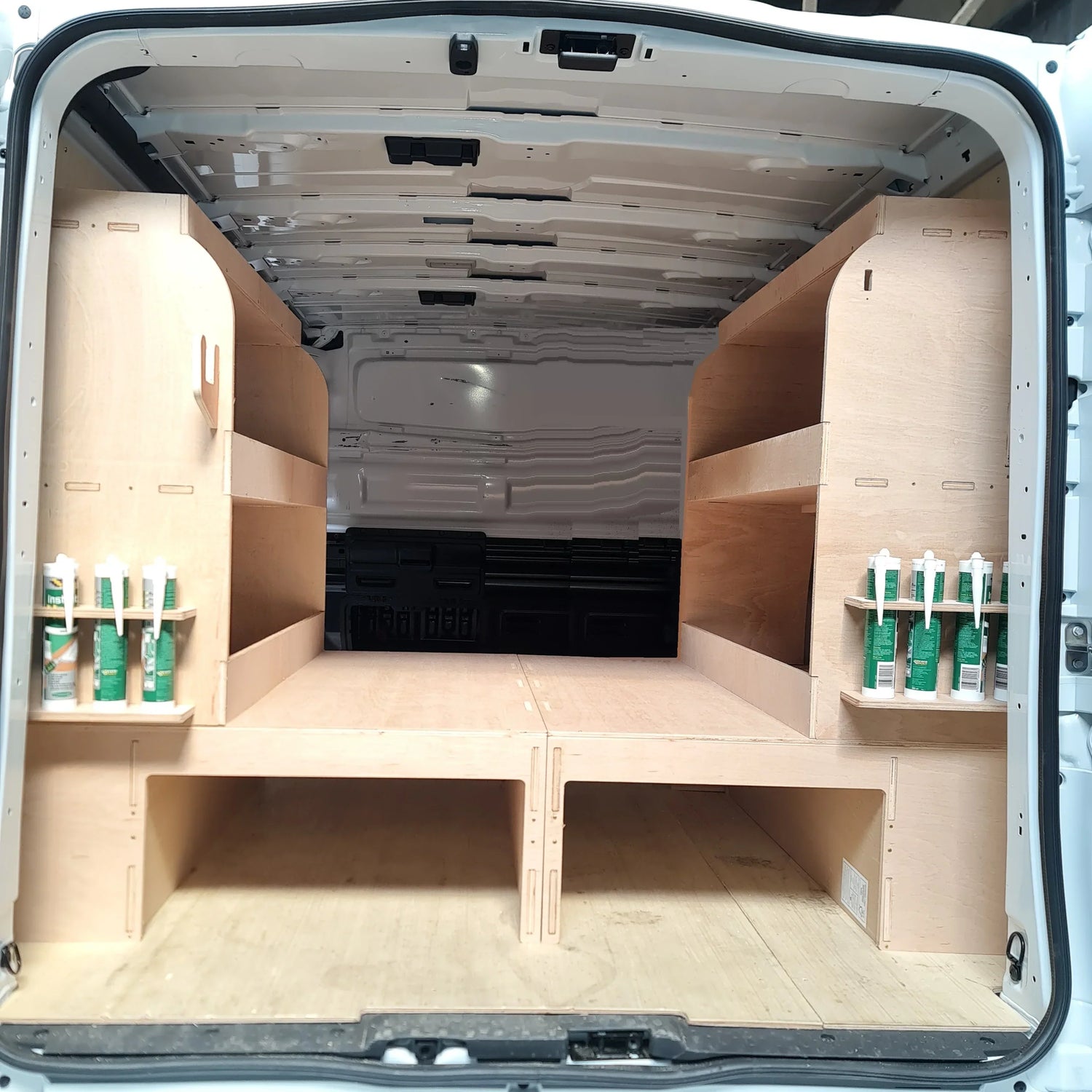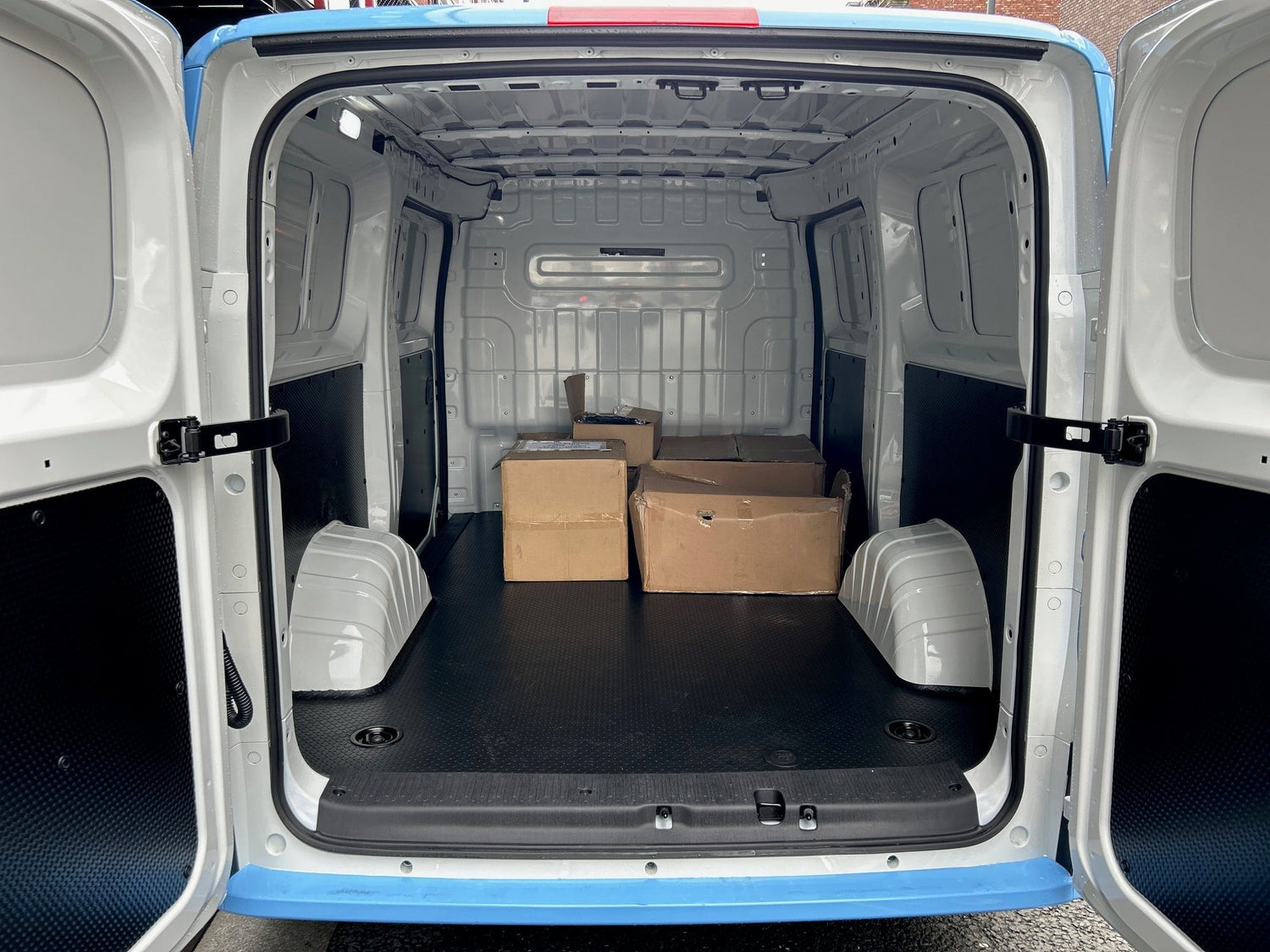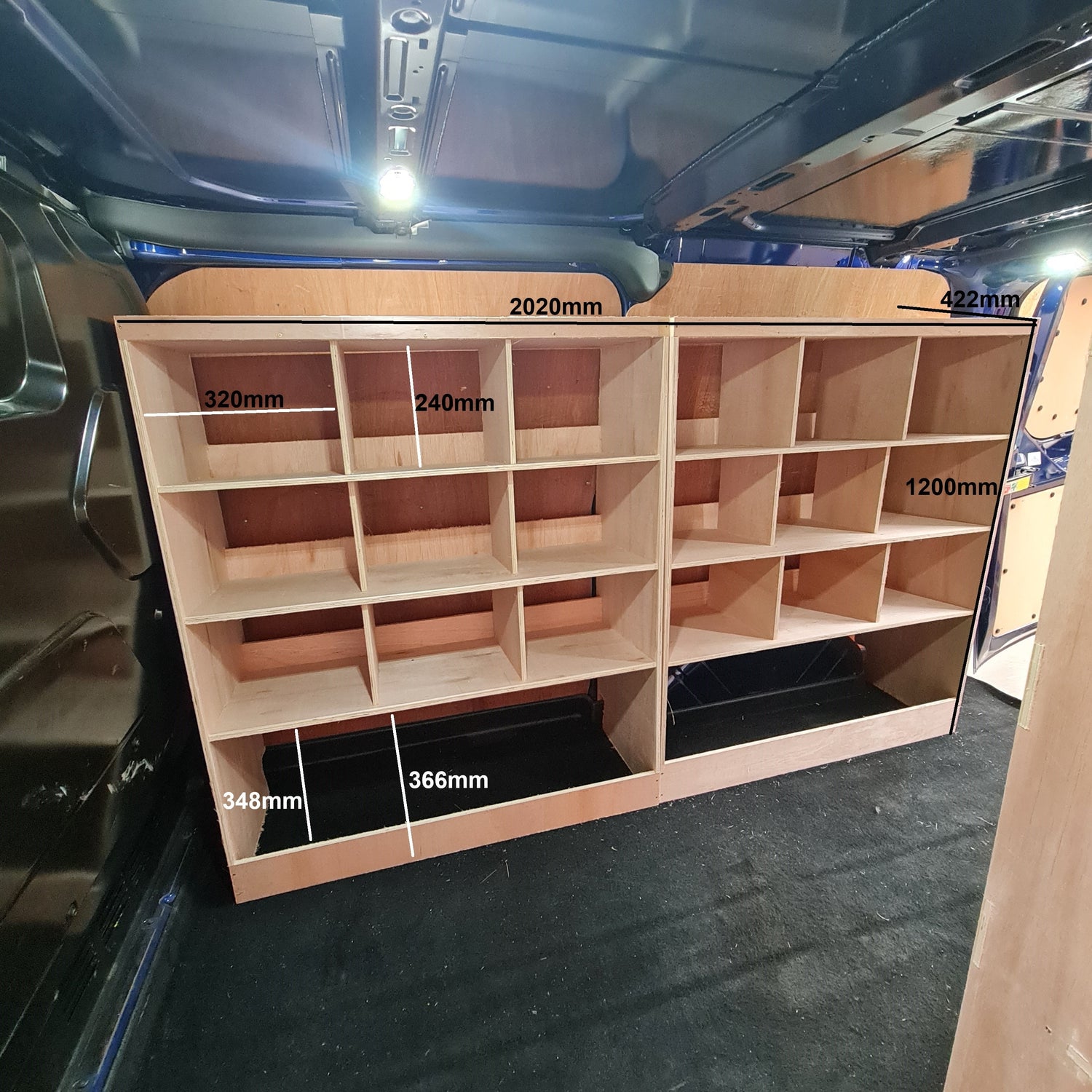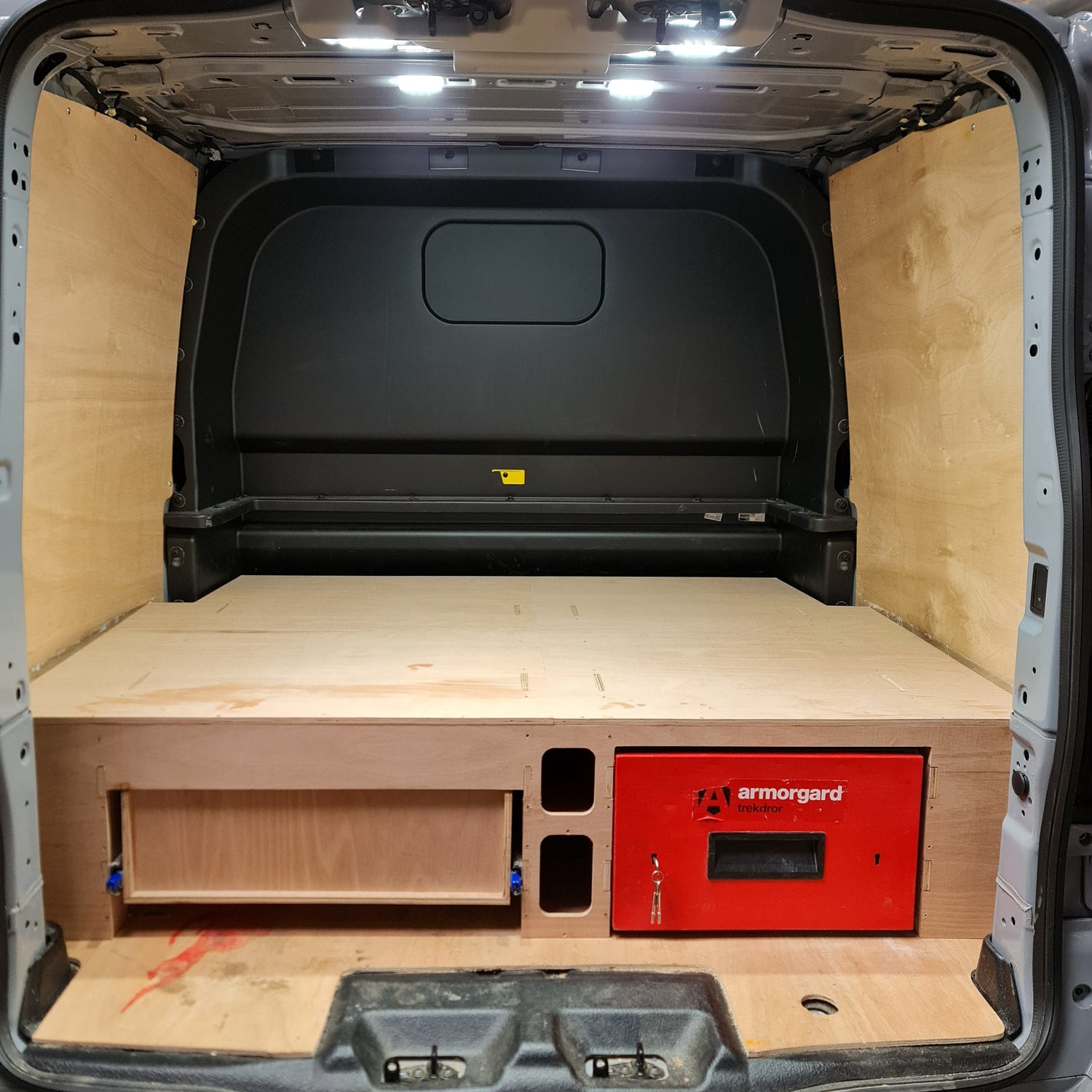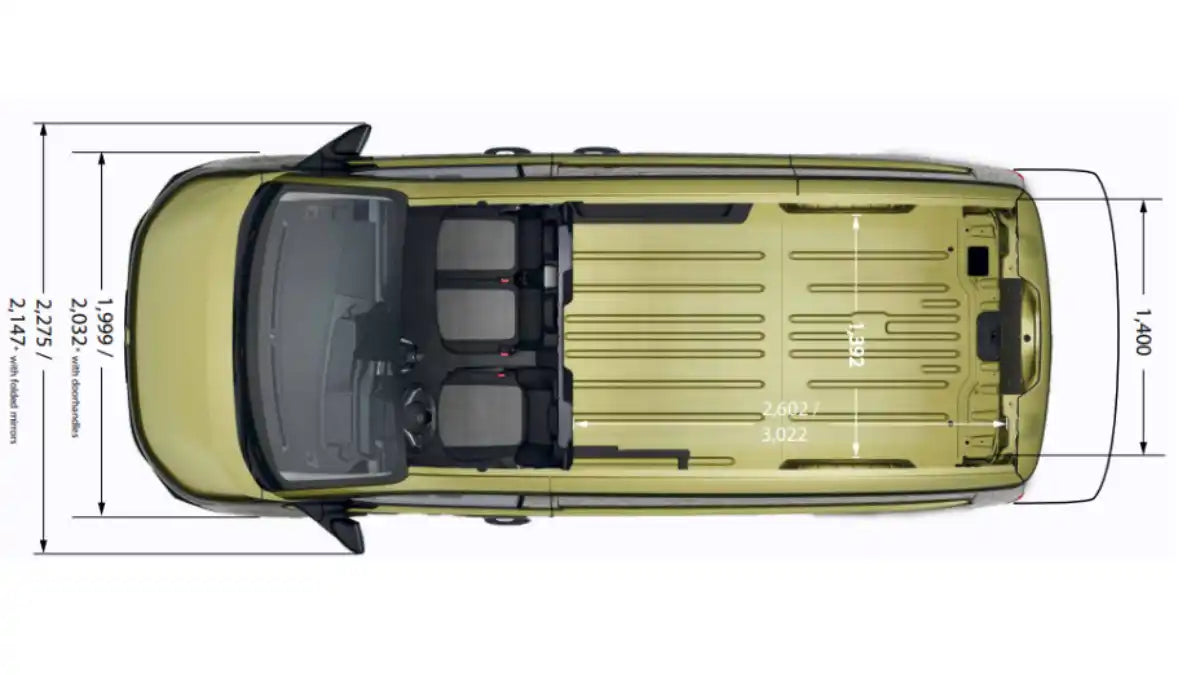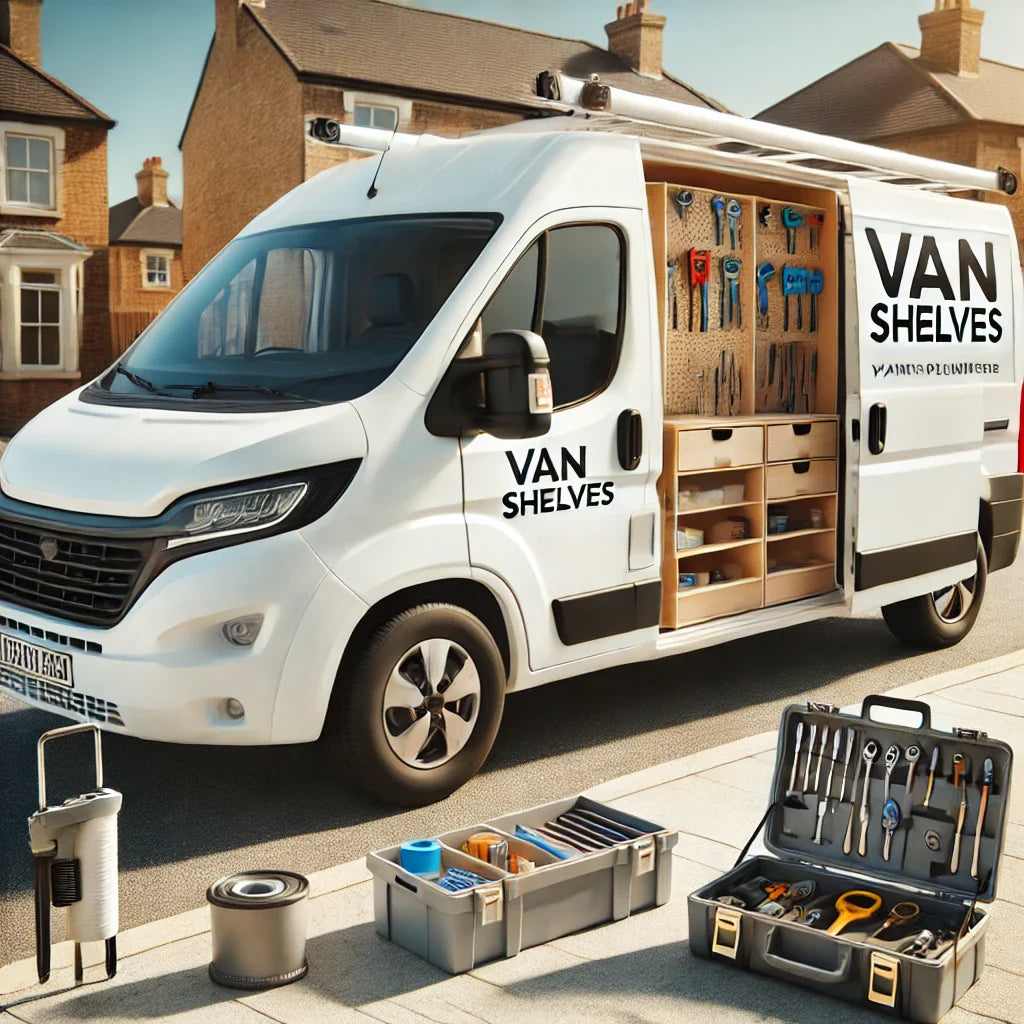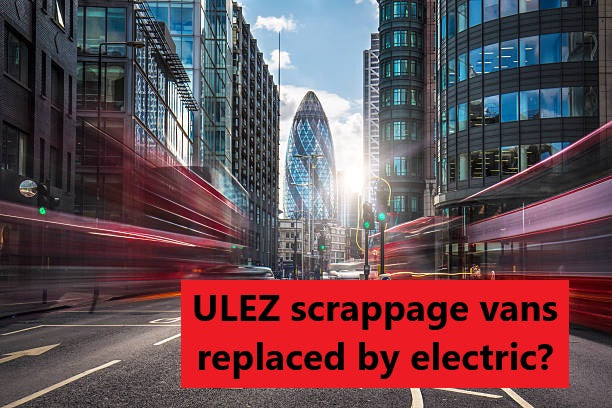Key Takeaways
Essential facts about Ford Transit models for UK tradespeople:
-
Four main models: Courier, Connect, Custom, and full-size Transit serve different needs
-
Transit Connect: Best for urban deliveries and light trades (2.9m³ cargo volume)
-
Transit Custom: Most popular choice for medium trades (6.0-6.8m³ capacity)
-
Full-size Transit: Heavy-duty applications up to 15.1m³ cargo space
-
Model naming: L1/L2 = length, H1/H2/H3 = height variations across the range
-
Perfect storage solutions: Available at Van Shelves for every Transit model
Having worked with Ford's commercial vehicle range for over a decade, fitting storage systems into hundreds of Ford Transit models across Britain, I've gained invaluable insight into how each variant performs in real-world conditions. From cramped London delivery routes to sprawling Scottish construction sites, understanding the different Ford Transit models has proven essential for helping tradespeople choose the right foundation for their mobile workshops.
The beauty of Ford's approach lies in their methodical progression from compact city vans to heavy-duty workhorses, each engineered for specific applications whilst maintaining consistent build quality and parts commonality that keeps running costs manageable.
Understanding Ford's Commercial Vehicle Strategy
Ford's commercial vehicle lineup represents decades of evolution, responding to changing business needs whilst maintaining the reliability that British tradespeople have come to expect. The types of Ford Transit vans available today reflect this careful development, with each model addressing specific market segments without unnecessary overlap.
Model Development Timeline: The current generation represents Ford's most comprehensive approach to commercial vehicles. Rather than creating entirely separate platforms, Ford engineered shared components and technologies across the range, reducing production costs whilst improving reliability and parts availability.
This strategy becomes particularly evident when examining storage system compatibility. Components designed for one Transit model often adapt to others with minimal modification, providing flexibility as businesses grow and fleet requirements evolve.
Ford Transit Models Complete Range Overview

The Ford vans models currently available in the UK market span four distinct categories, each engineered for specific operational requirements and payload demands.
Transit Model Hierarchy
|
Model |
Category |
Typical Use |
Cargo Volume Range |
|
Transit Courier |
Compact |
Urban delivery, courier services |
2.3m³ |
|
Transit Connect |
Small-Medium |
Light trades, small business |
2.9-3.7m³ |
|
Transit Custom |
Medium |
Most trades, fleet favourite |
6.0-6.8m³ |
|
Transit (Full-size) |
Large |
Heavy trades, specialist use |
9.5-15.1m³ |
This progression ensures businesses can find appropriate solutions whether they're starting with single-person operations or managing large-scale commercial fleets requiring standardised specifications across multiple vehicles.
Transit Courier: Entry-Level Excellence
The Transit Courier represents Ford's answer to urban delivery requirements, competing directly with rivals like the Peugeot Bipper and Citroën Nemo. Despite being the smallest in the Ford Transit models range, its engineering reflects Ford's commercial vehicle expertise.
Key Specifications:
-
Overall length: 4,160mm
-
Cargo volume: 2.3m³
-
Payload: Up to 660kg
-
Load length: 1,620mm
-
Internal height: 1,270mm
From extensive experience with courier companies across Manchester and Birmingham, the Courier excels in dense urban environments where parking restrictions and narrow streets challenge larger vehicles. The 1,270mm internal height permits organised storage systems, though space constraints require careful planning.
Real-World Performance: During a six-month trial with three different courier services, the Transit Courier consistently delivered 40+ mpg in mixed urban driving whilst maintaining comfortable ride quality that reduces driver fatigue during long shifts.
The rear door opening of 1,050mm width accommodates standard-sized packages efficiently, whilst the side loading door provides kerb-side access essential for busy city centre operations.
Transit Connect: Versatile Medium Solution
The Transit Connect occupies the sweet spot between compact efficiency and genuine work capability, making it extremely popular among sole traders and small businesses requiring more space than the Courier provides.
Transit Connect Specifications Table
|
Variant |
L1 Short |
L2 Long |
|
Overall length |
4,418mm |
4,844mm |
|
Cargo volume |
2.9m³ |
3.7m³ |
|
Load length |
1,753mm |
2,179mm |
|
Internal height |
1,269mm |
1,269mm |
|
Maximum payload |
890kg |
870kg |
Storage System Compatibility: The Connect's 1,269mm internal height creates challenges for traditional four-tier shelving systems, requiring specialised low-profile solutions. However, the 1,268mm width between wheel arches accommodates most standard van storage components with minor modifications.
Field Experience Insights: After installing storage systems in over 80 Transit Connects for electricians across Yorkshire, the L2's additional 426mm cargo length proves transformational for cable storage and longer tool organisation. The weight distribution remains excellent thanks to the extended wheelbase, maintaining Ford's characteristic stability.
Urban vs Rural Performance: In London traffic, the Connect's 4,418mm length (L1) navigates congested streets whilst providing legitimate commercial capability. Rural applications benefit from the improved ground clearance compared to car-derived alternatives, essential for construction site access.
Transit Custom: The Trade Favourite
The Transit Custom represents the most popular choice among types of Ford vans, striking an optimal balance between capability and manoeuvrability that explains its dominance across British trades.
Transit Custom Model Range
|
Configuration |
Length |
Wheelbase |
Cargo Volume |
Typical Applications |
|
L1H1 290 |
5,340mm |
3,300mm |
6.0m³ |
General trades, urban work |
|
L2H1 330 |
5,753mm |
3,300mm |
6.8m³ |
Extended storage needs |
Dimensional Advantages: The Custom's 1,525mm internal height provides exceptional storage flexibility, accommodating four-tier systems whilst maintaining comfortable access. This measurement exceeds most competitors significantly, translating directly into increased earning potential through better organisation.
Professional Experience: During extensive work with heating engineers across Scotland, the Custom's 2,555mm load length (L1) perfectly accommodates boiler components and pipework, whilst the 1,784mm maximum width allows comprehensive tool organisation alongside parts storage.
Load Capacity Analysis: Maximum payloads ranging from 1,070kg to 1,265kg depending on specification provide genuine commercial capability. The relationship between cargo volume and payload capacity demonstrates Ford's engineering efficiency, avoiding the payload penalties that plague some competitors.
Real-World Fuel Economy: Fleet operators consistently report 35-42mpg in mixed driving conditions, representing excellent efficiency for this size category. The 2.0-litre EcoBlue engine delivers torque characteristics perfectly suited to loaded commercial operation.
Full-Size Transit: Heavy-Duty Champion
The full-size Transit addresses applications beyond the Custom's capabilities, offering payload and volume combinations impossible in smaller vehicles.
Transit Model Configuration Options
|
Wheelbase |
Length Options |
Height Options |
Volume Range |
|
L2 (Short) |
5,981mm |
H2/H3 |
9.5-11.2m³ |
|
L3 (Medium) |
6,704mm |
H2/H3 |
12.7-13.4m³ |
|
L4 (Long) |
7,424mm |
H2/H3 |
14.0-15.1m³ |
Engineering Excellence: The Transit's ladder-frame construction provides exceptional strength for demanding applications. Unlike unibody competitors, this approach maintains structural integrity under maximum loading whilst supporting comprehensive storage system installations.
Specialist Applications: Through work with utilities companies across Wales, the L4H3 configuration's 15.1m³ cargo volume accommodates mobile workshop setups impossible in smaller vehicles. The 2,474mm load length handles 8-foot materials internally, eliminating external storage requirements.
Payload Capabilities: Maximum payloads reaching 2,350kg in single rear wheel configurations provide genuine commercial capability. Dual rear wheel options extend this to 2,520kg, supporting applications requiring both volume and weight capacity simultaneously.
Ford Transit vs Transit Connect Detailed Comparison
Understanding the Ford Transit vs Transit Connect decision requires examining how dimensional differences impact daily operations and long-term business development.
Direct Specification Comparison
|
Feature |
Transit Connect L2 |
Transit Custom L1 |
Advantage |
|
Cargo volume |
3.7m³ |
6.0m³ |
Custom +62% |
|
Internal height |
1,269mm |
1,525mm |
Custom +256mm |
|
Payload |
870kg |
1,265kg |
Custom +395kg |
|
Load length |
2,179mm |
2,555mm |
Custom +376mm |
|
Fuel economy |
45mpg |
38mpg |
Connect +7mpg |
|
Purchase price |
£22,000 |
£26,500 |
Connect -£4,500 |
Business Case Analysis: The £4,500 price difference between Connect L2 and Custom L1 represents significant investment for small businesses. However, the Custom's 62% additional cargo volume often justifies the premium through increased earning potential and reduced journey frequency.
Operational Experience: Working with a plumbing contractor who upgraded from Connect to Custom revealed dramatic efficiency improvements. The additional height accommodated comprehensive parts storage, whilst increased payload permitted bulk material purchasing, reducing supplier visits and improving job margins.
Types of Ford Transit Vans by Trade Application
Different types of Transit vans excel in specific trade applications, with dimensional characteristics directly impacting daily efficiency and earning potential.
Trade-Specific Model Recommendations
Electricians:
-
Preferred model: Transit Custom L1
-
Key benefit: 1,525mm height accommodates wire drum storage
-
Storage capacity: 4-tier systems with cable management
-
Real experience: Liverpool-based contractor achieved 30% efficiency improvement switching from Connect to Custom
Plumbers:
-
Preferred model: Transit Custom L2
-
Key benefit: 2,942mm length handles 3-metre pipe storage
-
Payload advantage: 1,185kg supports bulk fittings inventory
-
Field evidence: Yorkshire heating engineer eliminated external pipe rack requirements
Builders:
-
Preferred model: Full-size Transit L3H2
-
Key benefit: 12.7m³ volume accommodates varied materials
-
Heavy capability: 2,350kg payload for cement, blocks, equipment
-
Case study: Devon contractor reduced material deliveries by 40%
Courier Services:
-
Preferred model: Transit Connect L2
-
Key benefit: Urban manoeuvrability with adequate capacity
-
Efficiency factor: 45mpg reduces operational costs significantly
-
Proven performance: Manchester courier service reports 20% cost saving vs Custom
Advanced Storage System Integration
Ford Transit models accommodate sophisticated storage solutions thanks to consistent engineering approaches across the range. The modular construction permits extensive customisation without compromising structural integrity.
Universal Mounting Points: Ford's standardised mounting system ensures compatibility across models, simplifying storage system selection and future upgrades. Load-rated anchor points accommodate professional shelving systems whilst maintaining crash safety compliance.
Weight Distribution Engineering: Each model incorporates specific weight distribution requirements optimised for loaded operation. Storage system design must respect these parameters to maintain handling characteristics and component longevity.
For professional storage solutions engineered specifically for each Ford Transit model, explore our comprehensive van shelving range where systems are designed to maximise each variant's unique dimensional advantages whilst maintaining the safety and durability essential for commercial operation.
Electric Transit Options
Ford's commitment to electrification extends across the different Ford Transit models, with E-Transit variants available in multiple configurations addressing environmental concerns without compromising operational capability.
E-Transit Specifications
|
Model |
Range |
Cargo Volume |
Charging Time |
|
E-Transit Connect L2 |
200km |
3.7m³ |
8 hours (AC) |
|
E-Transit Custom L1 |
380km |
5.8m³ |
8 hours (AC) |
|
E-Transit L3H2 |
317km |
12.4m³ |
11 hours (AC) |
Real-World Experience: Six-month trials with London-based contractors revealed the E-Transit Custom's 380km range exceeds daily requirements for 90% of operations. Overnight charging using standard supplies eliminates range anxiety whilst significantly reducing operating costs.
Storage System Compatibility: Electric variants maintain cargo dimensions identical to conventional models, ensuring storage system compatibility. However, battery positioning affects payload capacity, requiring careful specification to maintain operational effectiveness.
Frequently Asked Questions
Q: What are the main differences between Ford Transit models? A: The Ford Transit models differ primarily in size and capability: Courier (2.3m³), Connect (2.9-3.7m³), Custom (6.0-6.8m³), and full-size Transit (9.5-15.1m³). Each targets specific business requirements from urban delivery to heavy-duty commercial use.
Q: Which Ford Transit model is best for electricians? A: Transit Custom L1 proves most popular among electricians due to its 1,525mm internal height accommodating wire drum storage and 6.0m³ volume providing comprehensive tool organisation capabilities.
Q: How do I choose between Transit Connect and Transit Custom? A: Consider cargo volume requirements: Connect L2 offers 3.7m³ suitable for light trades, whilst Custom L1 provides 6.0m³ for more comprehensive storage needs. The £4,500 price difference is often justified by increased earning potential.
Q: What's the difference between L1, L2, L3, L4 designations? A: These indicate wheelbase length: L1 (shortest), L2 (medium), L3 (long), L4 (longest). Longer wheelbases provide more cargo length but affect manoeuvrability in tight spaces.
Q: Can I fit the same shelving systems across different Transit models? A: Many components are compatible due to Ford's standardised approach, though height and width variations require model-specific configurations for optimal space utilisation.
Q: Which Transit model offers the best fuel economy? A: Transit Connect achieves approximately 45mpg, Custom manages 35-42mpg, whilst full-size Transit returns 30-35mpg depending on configuration and loading.
Q: What payload capacity do Transit models offer? A: Payloads range from 660kg (Courier) through 870-890kg (Connect), 1,070-1,265kg (Custom), to 2,350kg+ (full-size Transit) depending on specific configuration.
Q: Are electric Transit models available across the range? A: E-Transit variants are available for Connect, Custom, and full-size models, maintaining cargo dimensions whilst offering reduced operating costs for suitable applications.
Future-Proofing Your Transit Investment
Understanding Ford Transit models explained helps businesses make informed decisions that remain relevant as requirements evolve. Ford's consistent engineering approach ensures upgrade paths exist within the range, protecting initial investments whilst accommodating growth.
Model Progression Strategy: Many successful businesses begin with Transit Connect for initial operations, upgrading to Custom as workload increases, then potentially moving to full-size Transit for specialist requirements. This progression utilises shared components and familiar operating characteristics.
Technology Integration: Ford's commitment to advanced driver assistance systems, connectivity, and electrification ensures current models remain competitive throughout their operational life. Regular software updates maintain contemporary functionality without requiring vehicle replacement.
The types of Ford Transit vans available today represent Ford's most comprehensive commercial vehicle range, addressing diverse business requirements whilst maintaining the reliability and efficiency that British tradespeople demand. Whether you're starting with a single Courier or managing a mixed fleet including full-size Transits, understanding each model's strengths ensures optimal selection for your specific requirements.
Ready to maximise your Transit's potential with professional storage solutions? Discover our complete van shelving collection featuring systems engineered specifically for every Ford Transit model, ensuring you extract maximum value from your commercial vehicle investment whilst maintaining the organisation and efficiency essential for business success.

